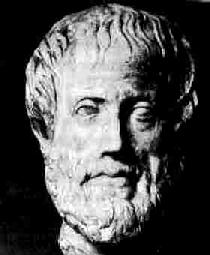The potential of carnosine supplements to deplete taurine and enhance copper absorption have pushed me to suspend its use until we get some human studies showing non-athletic benefits.
Carnosine and anserine enhance copper uptake.J Nutr Sci Vitaminol (Tokyo). 2008 Feb;54(1):61-5.
Lipid Peroxidation Potential and Antioxidants in the Heart Tissue of beta-Alanine- or Taurine-Treated Old Rats.
Parildar H, Dogru-Abbasoglu S, Mehmetçik G, Ozdemirler G, Koçak-Toker N, Uysal M.
Department of Biochemistry, Istanbul Medical Faculty, Istanbul University.
The aim of this study was to investigate the effect of the changes of taurine levels in the hearts of old rats on endogenous malondialdehyde (MDA) and diene conjugate (DC) levels and ascorbic acid (AA)- and NADPH-induced lipid peroxidation as well as non-enzymatic (glutathione, vitamin E and vitamin C) and enzymatic antioxidants (superoxide dismutase, glutathione peroxidase and glutathione transferase). Two groups of old (22 mo) rats were treated with beta-alanine (3%, w/v; in drinking water), a taurine depleting agent, or taurine (2% w/v; in drinking water) for 6 wk. Significant decreases were observed in taurine contents of hearts in old rats as compared to young (5 mo) rats. We found that MDA and DC levels and AA- and NADPH-induced lipid peroxidation increased, but non-enzymatic and enzymatic antioxidants did not alter in heart homogenates of aged rats.
beta-Alanine administration resulted in significant decreases in heart taurine levels of old rats. This treatment did not cause further increases in MDA or DC levels or changes in antioxidants. However, AA- and NADPH-induced lipid peroxidation was higher than that of old rats. Taurine treatment caused significant increases in heart taurine levels of old rats. This treatment was found to decrease endogenous MDA and DC levels without affecting the antioxidant system in the heart homogenates of aged rats. AA- and NADPH-induced lipid peroxidation was also reduced in old rats when given taurine, although not statistically significantly. Our results indicate that the changes in heart taurine levels may influence the susceptibility of heart tissue to lipid peroxidation in aged rats and that taurine supplementation has protective effects on age-dependent oxidative stress in heart tissue.
PMID: 18388409
http://www.geocities.../carnosine.htmlHowever, histidine and carnosine are powerful carriers of copper. They transport copper from the intestinal milieu into the portal blood and from there to organs and tissues in the body. And don't think you can displace copper with zinc once the copper is on histidine - you cannot. The equilibrium constantt for copper II chelated to histidine is 18.3; for zinc it is 6.7 to 12.9, depending on chelate structure (Ref. Chaberek and Martell, Organic Sequestering Agents, John Wiley & Sons, p.549). Because these are exponential relationships, the real difference in the constants is 10 tothe 5th up to 10 to the 11th. Only glutathione, cysteine and thionein can intercept this carnosine-copper transport, but that's one of the big problems in autism, isn't it? These sulfur players have gone AWOL, and copper is excessive at the expense of zinc. Dr. Bill Walsh has made excellent presentations on this. You might think that carnosine plus zinc will act to put zinc in and take copper out. With these equilibrium constants and with the natural copper content of food, that's very unlikely. You need a million or more zinc atoms for each copper atom to be competitive in this game!
Histidine/carnosine-copper wisdom has graduated into medical textbooks. We're not talking about research papers; we're talking what you should and shouldn't do per medical texts. Copper homeostasis with histidine and histidine-albumin complexes are well discussed by David Danks, Chapter 58 of Stanbury et al, The Metabolic Basis of Inherited Disease, 5th Ed, p.1252-1254. For carnosine, the publicity is a bit worse. Carnosine is a threat to worsened Wilson's disease because it and its sister anserine are such good importers of copper to body tissues. Ref: Scriver CR and TLPerry, Chapt 26 in Scriver et al eds, The Metabolic Basis of Inherited Disease6th ed McGraw-Hill (1989) 765.
Now, let's go to the really bad guy here, beta-alanine. To be concise: beta-alanine blocks renal conservation of taurine and causeshypertaurinuria - loss of taurine in the urine. This, in turrn, causes urinary loss of magnesium, which worsens sulfotransferase activity as well as lots ofother necessary enzymatic processes. If you give carnosine, you lose taurine and magnesium. There are lots of references, but you can start with Dr.Charles Scriver's work referenced above, because all of this biochemistry (carnosine, beta-alanine, taurine, etc.) is closely related.






















































